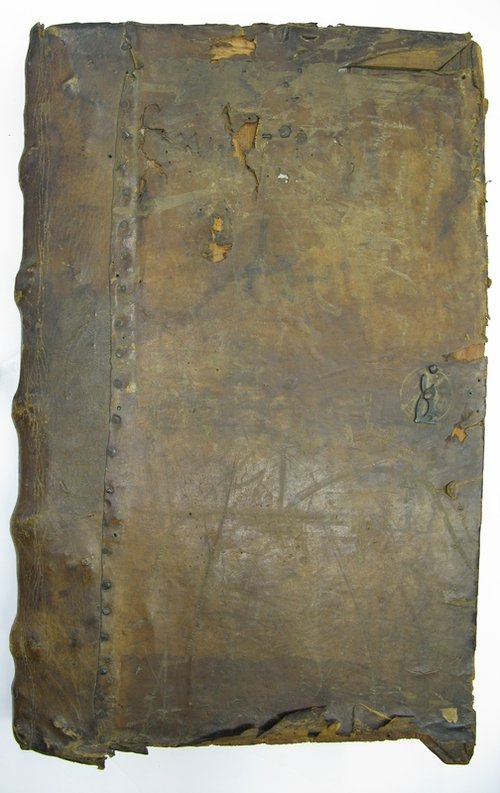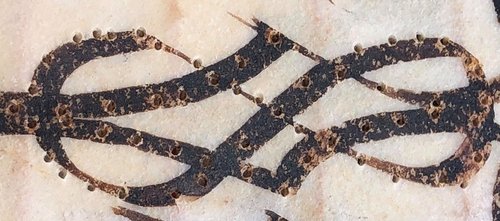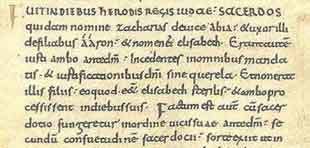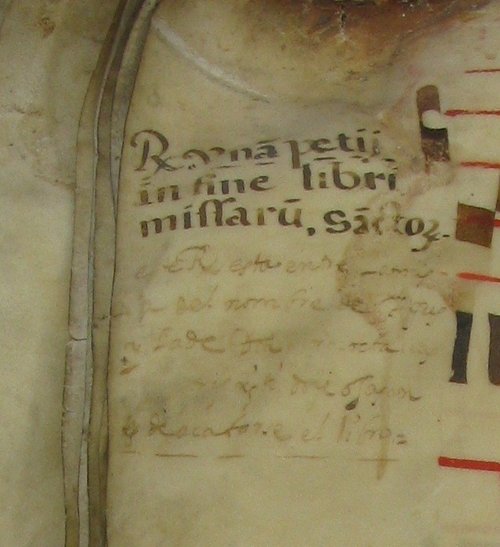Holt-Atherton Special Collections and Archives houses a 16th-century Gradual, donated to the University around the 1970s by the Stuart family. The Gradual is presumably Spanish in origin and features old Spanish in marginalia. Manuscripts like these are more commonly found in Ivy League schools or museum institutions around the world.
Credits:
Exhibit created by: Mia Watts
Imported to DCX by: Gillian Goldberg
What is a Gradual?
According to the Grove Music Encyclopedia, a Gradual is defined as a "liturgical book of the Western Church containing the chants for the Proper of the Mass and secondarily, in more recent times, those of the Ordinary."

Image: A page from the Liber Usualis
The Pacific Library Gradual

Left: The front cover of the Gradual
The Stuart Library Gradual itself is large, made up of folios that measure 15 1/2 x 24 inches. Books of that size were primarily meant to be read by several people at one time. Many pages within the gradual have fallen out of the binding or have been cut out at some point. 83 folios remain and make up about 2/3 of the original book. The entire book is bound in very old, disintegrating leather encompassing large wooden plats that serve as the covers.
The inside front cover of the Gradual has been glued over with multiple sheets of paper from various sources. One includes a possible financial ledger, entirely in Spanish, further suggesting the Gradual's origins in Spain; the other old sheet music.
Right: Inside front cover of the Gradual

Upon closer inspection of the inks used for the text and music, a curious discrepancy was discovered. Some of the larger letters at the beginnings of new chants were hand painted, but the letters for the text and the music were not. Some of the more ornately title letters feature uniform punctures in the vellum, as if a stencil had been pressed down and stamped. From this evidence, it can be deduced that this Gradual was, in fact, printed and not hand painted as commonly expected. The first printed Graduals were printed fro German churches around 1470. With its similarities to these printed Graduals, this evidence might push the suspected date back to the late 15th century rather than the 16th century.


Above: Middle of the "M" turned horizontally
Below: Middle of the "M" reverse side turned horizontally

Script and Music

Neumes developed into more definite shapes, called ligatures, that could dictate rhythmical values, as well as being placed on specific lines to delineat pitch. This type of squared notation without stems became one of the most regularly used notational systems in chant music for the next several centuries. The notational system featured throughout the Stuart Library Gradual is an example of this notation but further developed, which can further confirm the possibility of its origins in the sixteenth century, or earlier.


The type of script used throughout the gradual closely resembles a script known as Caroline or Carolingian Miniscule. Named after Emperor Charlemagne, this script was popular with royal, noble, and ecclesiastical patronage for its uniformity and clarity. Caroline Miniscult was usually reserved for Latin and Old English texts. The script's distinctive features include a rounded aspect to the script that emphasizes uniform head and baselines.
Marginalia and Repairs
There are no distinct watermarks on the pages or any hints at ownership. There are several examples of marginalia, or handwritten notes in the margins, throughout the Gradual. They are all written in what seems like a version of older Spanish, but they merely indicate on how to properly sing through the chants.

Unfortunately the Gradual is very bad condition and must be handled with extreme care. The pages are made of vellum, or dried calf skin, and have been severely water damaged over the years. The corners of the pages are also delicate as they have cracked and ripped. Some holes have appeared and there is evidence that bugs, likely termites and silverfish, may have gotten to it. There apparently have been numerous attempts to correct and restore the Gradual. The binding was replaced sometime in the nineteenth century, and there are visible attempts on some pages to repair tears. Some have sewn repairs through the vellum, as well as taped pieces to hold pages together, and glued extra pieces of vellum.

